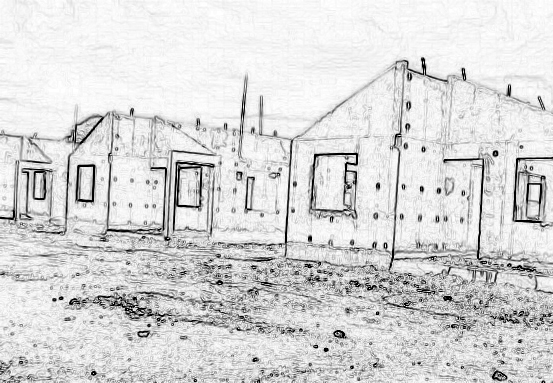By Paul Hay
Op-Ed Contributor
In 2008, Dean Burrowes recorded his analysis of the global recession in “The Jamaican Construction and Real Estate Industry and the Impact of the Global Economic Crisis.” He noted that the bankruptcy of major US financial houses had reduced liquidity in the local banking sector, “drying up funds available for construction projects”
Some developers scaled back or suspended projects under construction, fearing local job losses would impede sale of the completed buildings. Then developers with projects in-the-pipeline, then took a “wait-and-see posture until economic prospects improve(d).”
Economic data from the Statistical Institute of Jamaica for the period 2002 – 2011 confirms that the rate of growth in the construction and real estate industries did decline from 2008 – 2010, with construction being the worst-affected. The low rate of growth experienced in 2011 indicates that the real estate industry should return to pre-recession levels this year, but restoration of Jamaica’s construction industry may not materialize before 2014.
From 2003 – 2011, Jamaica’s construction industry represented approximately 8 percent of its gross domestic product (GDP). During this period, the industry showed negative growth in 2006, and from 2008 -2010.
In 2006, a major problem with the quality of locally-produced cement literally shut down the industry until alternative supplies could be imported. The -3.7 percent growth in 2006 was followed by 4.5-percent growth in 2007.
So the industry recovered from one crisis only to be thrown into another. The pre-recession value added in 2007 was J$63.8 billion, only J$0.4 billion more than that of 2005, at constant (2007) prices. So, the pre-recession value added was only slightly higher than that of 2005.
In 2010, the value added at constant (2007) prices was J$55.6 billion, approximately 13 percent lower than 2007. Growth in 2011 was only 0.6 percent, below the 1.5 percent GDP growth that year.
Previously, positive growth exceeded GDP growth, and typically ranged from 0.9 – 3.4 percent If the industry’s growth can equal GDP growth this year and return to superior growth rates in subsequent years, Jamaica’s construction industry should regain pre-recession value added in two years, and, as stated before, this would only be marginally higher than that existing nearly a decade earlier.
In contrast, Jamaica’s real estate industry represented 10 percent of GDP up to 2007, but has been 11 percent of GDP since 2008. Its growth rate fell in 2008, and was -1.2 percent in 2009 and 2010, exceeding the GDP growth rate for the respective years.
In 2007, its value added was J$79.8 billion and fell by 1.0 percent to $79.0 billion in 2010. It had a 0.5 percent growth rate in 2011, uncharacteristically lower than the GDP growth. But typical growth rates range from 1.4 – 3.4 percent, so this industry should return to pre-recession levels this year.
Interestingly, economic data from the Bank of Jamaica for loans by commercial banks for land purchase and construction do not confirm Burrowes’ observation that banks reduced funding for construction projects.
In 2007, commercial banks provided loans amounting to 14.1 percent of the value added by the construction industry. This actually rose during the recession to a high of 27.7 percent at current prices in 2010, subsequently falling to 22.1 percent in 2011.
It is therefore likely that developers unilaterally suspended, scaled back and took a “wait-and-see posture” while awaiting improvement of the economy. Loans from commercial banks should therefore not retard the construction industry’s return to pre-recession levels, and, barring diminished confidence of developers, this should be achieved in 2014.
Paul Hay is the founder and manager of Paul Hay Capital Projects.
Note: the opinions expressed in Caribbean Journal Op-Eds are those of the author and do not necessarily reflect the views of the Caribbean Journal.







